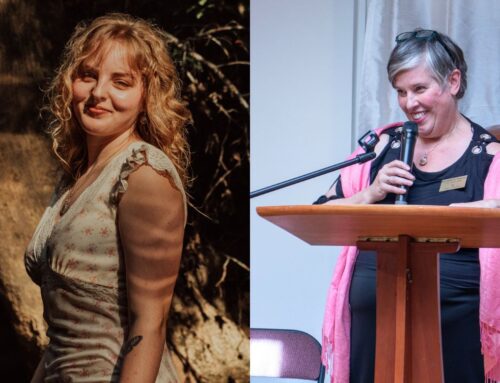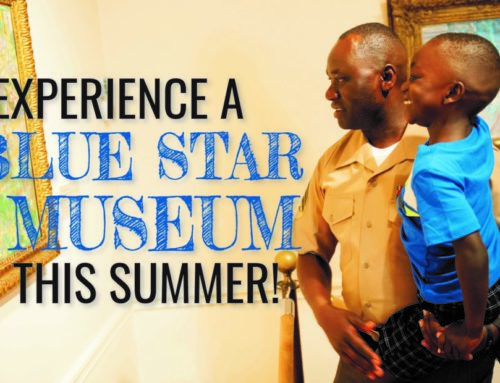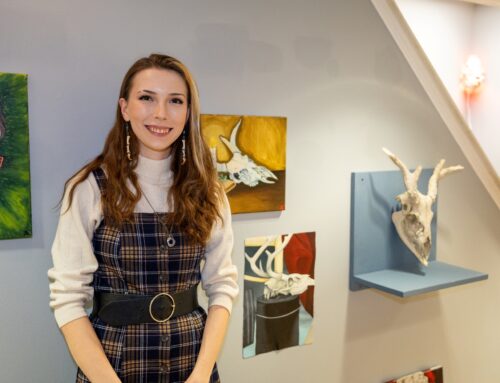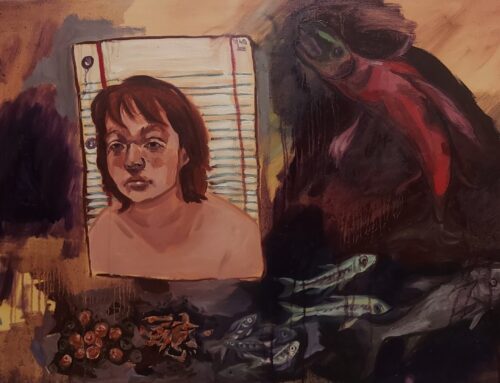September 4, 2014
The Oglethorpe University Museum of Art is pleased to present STEALING BASE: Cuba at Bat, a visual exploration of baseball through the varied perspectives of Cuban-born artists, September 11-December 7, 2014.
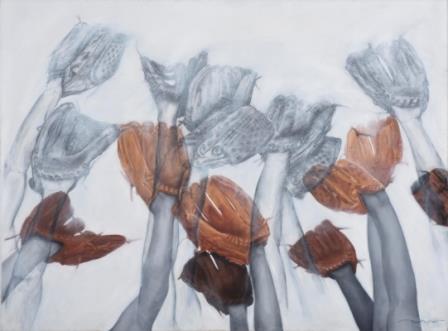 Arlés del Rio, Untitled from the series Esperando que caigan las cosas del cielo or Deporte nacional
Arlés del Rio, Untitled from the series Esperando que caigan las cosas del cielo or Deporte nacional
(Hoping That Things Fall from the Sky or National Sport), 2012. Shelley and Donald Rubin Private Collection.
The exhibition, part of the Shelley and Donald Rubin Exhibition Series, features works by sixteen established and emerging artists: Jesoviel Abstengo-Chaviano, Alejandro Aguilera, Carlos Cárdenas, Yunier Hernández Figueroa, Duniesky Martín, Frank Ernesto Martínez González, Bernardo Navarro Tomas, Juan Padrón, Douglas Pérez Castro, Arlés del Rio, Perfecto Romero, Reynerio Tamayo, José Angel Toirac, Harold Vázquez Ley, Villalvilla, and Quisqueya Henríquez.
The exhibition is curated by Rachel Perera Weingeist, director and curator of The 8th Floor in New York, and Elizabeth Peterson, director of the Oglethorpe University Museum of Art, with an exhibition essay by Orlando Hernández, a Havana-based curator. The original exhibition concept was the result of a long collaboration between Weingeist and Hernández that culminated in the summer of 2013 at The 8th Floor Gallery in New York.
“Baseball is today, without distinction of classes, age and sex, The arrival of baseball in Cuba coincided with the emergence of the independence movement in 1868. The sport quickly became a collective emblem of national identity. A love for baseball connects Cubans across race, religion, politics and geography. Pop-flys, stolen bases, and home runs provide meaningful and accessible imagery for Cuban artists. Responding not only to the sport as national pastime, their work has further sought to convey larger complexities within Cuban society. Stealing Base presents the work of a diverse range of contemporary artists, living in Cuba and in the U.S., who have found potency in the imagery of the sport. In El Cuarto Bate (The Cleanup Hitter), Reynerio Tamayo depicts, in his playful cartoon-like style, the figure of an addled baseball player with a ship of characters—La Caridad del Cobre, a santero, fans—upon his shoulders, carrying the weight of the Cuban people’s expectations. The player wearing a national uniform emblemizes the importance of baseball as a welcomed distraction from every day struggle. Conversely, Arlés del Rio’s sculpture Hoping that Things Fall from the Sky suggests a more stark perspective. A skeletal bronze arm reaches up from a tattered concrete base. A well-worn baseball mitt stretched into the air waits for something that it seems will never come. Frank Ernesto Martínez González’s precise charcoal drawing, Another Way to Overcome the Boundaries, juxtaposes a player reaching for a fly ball against the construction of the Berlin Wall. Just out of his grasp, the ball passes over the heads of the military officers laying bricks. Viewers are prompted to consider the success of baseball as a Cuban cultural ambassador. Considering both salt as a remnant and a resource in his photographic series The Limits of Salt, Harold Vázquez Ley uses the ubiquitous mineral to create forms that resemble sports highlights from black and white periodicals. The potent image captures the thrill of a hitter’s first contact, while the use of grains of salt, an essential commodity, prompts viewers to question their role as spectators distracted by the thrill of sport as resources are quickly depleting. “Without question, baseball is a great generator of meanings,” writes Orlando Hernández in his exhibition essay. “The game can and should be used as a grand metaphor to express or to understand not only art but the very reality in which we live.” “Baseball has played an important role in the impugning, critical, and revolutionary spirit that Cuban artists have demonstrated when faced with acts of dogmatism, official intolerance, and censorship,” Hernández concludes. “Thanks to these brave artists, we realize that the game is not over yet.” A series of events celebrating baseball and Cuban culture will accompany the exhibition: Oglethorpe University Museum of Art is open Tuesday-Sunday, 12 noon to 5 p.m. and closed Mondays and university holidays. General and lecture admission is $5. OUMA members and children under 12 receive free admission. Parking is free. OUMA is located on the Oglethorpe University campus at 4484 Peachtree Street NE, Atlanta, GA 30319. OUMA is a member of the Southeastern Museums Conference, American Alliance of Museums, and the Association of Academic Museums and Galleries. For more information, visit museum.oglethorpe.edu or call 404-364-8555. The Shelley and Donald Rubin Exhibition Series was established in 2013 through a generous gift from Shelley and Donald J. Rubin, a 1956 Oglethorpe alumnus, to support exhibitions at the OU Museum of Art, as well as arts-related curricular programs complementing each exhibition of the series. In the future, this program is envisioned to encourage and support new courses, lectures, online learning, and other innovative approaches. Oglethorpe University has entered an era of innovation, reinvigoration, and growth with the opening of the $16M Turner Lynch Campus Center in 2013 and the launch of a $50M comprehensive campaign. Founded in 1835, Oglethorpe is Atlanta’s leading liberal arts and sciences university of 1100 students representing 34 states and 28 countries. Oglethorpe is the only university in Georgia to be named to the President’s Higher Education Community Service Honor Roll for commitment to and achievement in community service since 2006. In 2012, Oglethorpe launched two strategic partnerships with study abroad provider Global LEAD and EF (Education First), the world leader in international education. EF’s Atlanta headquarters is located on Oglethorpe’s campus, which is also home to the OU Museum of Art and Georgia Shakespeare, a professional theatre-in-residence. Renowned for its groundbreaking core program, Oglethorpe is a member of the Annapolis Group, comprised of America’s most selective liberal arts institutions, and has been named among U.S. News & World Report’s Best Liberal Arts Colleges, Forbes’ America’s Best Colleges, and Princeton Review’s Best Southeastern Colleges. The Oglethorpe Stormy Petrels compete in the NCAA Division III Southern Athletic Association. Website: www.oglethorpe.edu # # # Contact: Renee Vary, 404-364-8868 or [email protected]
the preferred diversion of all
– El Sport (Havana), Sept. 2, 1886


